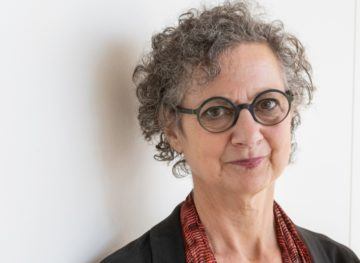 Virginia Jackson on the late Lauren Berlant, over at Critical Inquiry:
Virginia Jackson on the late Lauren Berlant, over at Critical Inquiry:
I. The Function of Criticism
In 2015, before she got sick and after they turned down an offer from my university, I wrote an essay about Lauren’s work and what it meant to me.
That essay was a poor rehearsal for an elegy, since all I was mourning then was the chance to have them as a colleague, the missed opportunity to have her close. I never imagined a world without her; instead, I selfishly and grandiosely thought that we could create a world together, and then I missed that fantasy world when it did not happen (they would have had a lot to say about that). I see now (as I think she saw then) that world would have been impossible, but that’s the kind of thing Lauren made you believe: that the sum of [nothing is impossible] + [everything is impossible] = {some things must actually be possible}. And they made you think that work—academic work!– could be a form of personally motivated communal expression, maybe even a way of making wishes come true. I needed that reassurance at the time (I still do), and maybe it is also reassuring to confess that Lauren answered that need, though honestly, I am embarrassed to write about my deep affection for and attachment to Lauren in Critical Inquiry, since such public testimony translates so immediately into cultural capital, given who Lauren was and will continue to become. They would have pointed that out, too. In fact, they would have said that may be all criticism ever is. Like that precarious sequence and like the pronouns in those sentences, my feelings then as now were and are a muddle of the personal and the professional: as everybody can’t seem to stop saying these days, in recent years, Lauren used “she” for personal stuff and “they” for professional stuff, but the problem with this separation is that she was terrible at telling the personal from the public, the personal from the professional, the personal from the academic, the personal from, well, anything. Whatever they did, there she was. Now that they are gone, and she is, too, I see that what I wrote six years ago didn’t even come close to measuring our loss.
Lauren was a public figure, so of course they had a mediated life that was very different than her life with her cats and Ian. That’s not what I’m saying. I was not one of her best friends, though I loved her dearly, but probably like a lot of people, what I loved most was their work.
More here.
 Biotechnology company Moderna is preparing to begin human trials on HIV vaccines as early as Wednesday, using the same mRNA platform as the firm’s COVID-19 vaccine.
Biotechnology company Moderna is preparing to begin human trials on HIV vaccines as early as Wednesday, using the same mRNA platform as the firm’s COVID-19 vaccine.
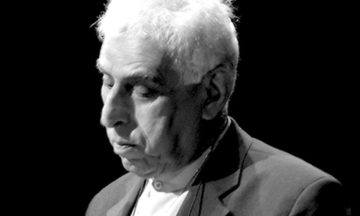 AT THE CASABLANCA Book Fair in Morocco back in 2009, the Iraqi poet Saadi Youssef was signing the seventh volume of his Complete Poetic Works. A flock of junior high school girls in their blue uniforms were standing nearby. One of them pointed to her friend, telling Youssef: “She, too, is a poet.” He smiled and gestured to the young poet to come forward. She hesitated: “I’m just a beginner.” “I, too, am a beginner. We are all beginners,” said Youssef. The septuagenarian who uttered those words is widely recognized as one of the greatest modern Arab poets. When he uttered those words, he had been writing and publishing poetry for more than half a century. It was neither a hyperbolic statement, nor false modesty on his part. Well into his 80s, one of the most remarkable features of Youssef’s poetry (and his persona) was his restlessness. He was audacious (even reckless, at times) and on an incessant quest for new beginnings.
AT THE CASABLANCA Book Fair in Morocco back in 2009, the Iraqi poet Saadi Youssef was signing the seventh volume of his Complete Poetic Works. A flock of junior high school girls in their blue uniforms were standing nearby. One of them pointed to her friend, telling Youssef: “She, too, is a poet.” He smiled and gestured to the young poet to come forward. She hesitated: “I’m just a beginner.” “I, too, am a beginner. We are all beginners,” said Youssef. The septuagenarian who uttered those words is widely recognized as one of the greatest modern Arab poets. When he uttered those words, he had been writing and publishing poetry for more than half a century. It was neither a hyperbolic statement, nor false modesty on his part. Well into his 80s, one of the most remarkable features of Youssef’s poetry (and his persona) was his restlessness. He was audacious (even reckless, at times) and on an incessant quest for new beginnings.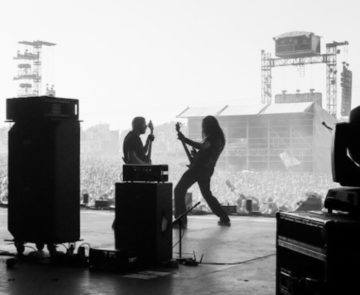 Hi. My name is Marc. I’m a guitarist who points extremely loud amplifiers directly at his head. Very often. Sometimes as often as 200 nights a year for the past 45 years. Audiologists say this could make one’s ears howl, create an uncomfortable sensation of density in one’s head, and eventually make it impossible to hear human conversation. Yet I persist . . . Why?
Hi. My name is Marc. I’m a guitarist who points extremely loud amplifiers directly at his head. Very often. Sometimes as often as 200 nights a year for the past 45 years. Audiologists say this could make one’s ears howl, create an uncomfortable sensation of density in one’s head, and eventually make it impossible to hear human conversation. Yet I persist . . . Why? L
L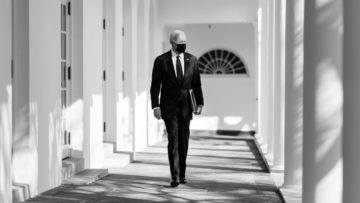 In the past few weeks, the Biden administration’s domestic agenda has come into sharp focus: a bipartisan Senate bill for physical and environmental infrastructure projects nearing passage; new statistics showing that COVID-19 relief has dramatically reduced poverty across demographic groups; an executive order aimed at concentrated market power, promoting competition and worker power; a $3.5 trillion budget proposal with large outlays in social spending, paid for by taxes on the rich and corporations; presidential speeches on behalf of better jobs for Americans at the bottom and middle of the economy. The sum of these and other policies is more ambitious, and more ideologically pointed, than the Biden campaign slogan “Build Back Better.” President Biden is using the resources of the federal government to reverse nearly half a century of growing monopoly, plutocracy, and inequality. Regardless of whether this agenda goes far enough, or whether Congress allows it to go anywhere at all, the administration is pointing the country in a fundamentally new direction.
In the past few weeks, the Biden administration’s domestic agenda has come into sharp focus: a bipartisan Senate bill for physical and environmental infrastructure projects nearing passage; new statistics showing that COVID-19 relief has dramatically reduced poverty across demographic groups; an executive order aimed at concentrated market power, promoting competition and worker power; a $3.5 trillion budget proposal with large outlays in social spending, paid for by taxes on the rich and corporations; presidential speeches on behalf of better jobs for Americans at the bottom and middle of the economy. The sum of these and other policies is more ambitious, and more ideologically pointed, than the Biden campaign slogan “Build Back Better.” President Biden is using the resources of the federal government to reverse nearly half a century of growing monopoly, plutocracy, and inequality. Regardless of whether this agenda goes far enough, or whether Congress allows it to go anywhere at all, the administration is pointing the country in a fundamentally new direction. Arjun Jayadev and J.W. Mason in Boston Review:
Arjun Jayadev and J.W. Mason in Boston Review: Virginia Jackson on the late Lauren Berlant, over at Critical Inquiry:
Virginia Jackson on the late Lauren Berlant, over at Critical Inquiry: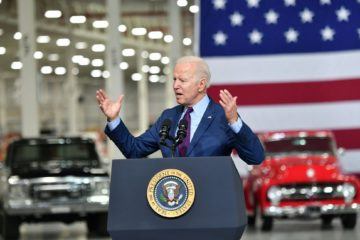 Kate Aronoff in The New Republic:
Kate Aronoff in The New Republic: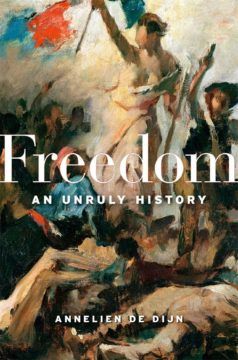 Aziz Huq in the Los Angeles Review of Books:
Aziz Huq in the Los Angeles Review of Books: A
A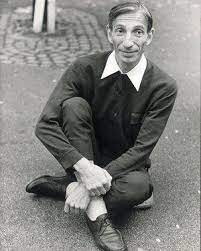 Illich was a purveyor of impossible truths, truths so radical that they questioned the very foundations of modern certitudes — progress, economic growth, health, education, mobility. While he was not wrong, we had all been riding on a train going in the opposite direction for so long that it was hard to see how, in any practical sense, the momentum could ever be stalled. And that was his point. Now that “the shadow our future throws” of which Illich warned is darkening the skies of the present, it is time to reconsider his thought.
Illich was a purveyor of impossible truths, truths so radical that they questioned the very foundations of modern certitudes — progress, economic growth, health, education, mobility. While he was not wrong, we had all been riding on a train going in the opposite direction for so long that it was hard to see how, in any practical sense, the momentum could ever be stalled. And that was his point. Now that “the shadow our future throws” of which Illich warned is darkening the skies of the present, it is time to reconsider his thought. For an entire year that involved emergency room visits, legal proceedings, involuntary unemployment and the death of loved ones, Mehran Nazir struggled with a depressive episode. He would find his mind flooded with self-destructive thoughts. He’d faintly hope his plane from Newark to San Francisco would crash or that he would doze off at the wheel of his car and end up in a fatal accident. The normally extroverted Nazir would lie paralyzed in bed for hours doing nothing, not wanting to speak with family and canceling plans with friends. It came to a head when Nazir found himself on the brink of suicide. In his darkest moment, he drafted a will and decided where it would happen.
For an entire year that involved emergency room visits, legal proceedings, involuntary unemployment and the death of loved ones, Mehran Nazir struggled with a depressive episode. He would find his mind flooded with self-destructive thoughts. He’d faintly hope his plane from Newark to San Francisco would crash or that he would doze off at the wheel of his car and end up in a fatal accident. The normally extroverted Nazir would lie paralyzed in bed for hours doing nothing, not wanting to speak with family and canceling plans with friends. It came to a head when Nazir found himself on the brink of suicide. In his darkest moment, he drafted a will and decided where it would happen. There are many variations to Hans Christian Andersen’s classic literary folktale “The Emperor’s New Clothes,” but most have the same basic plot points: A vain emperor is duped by two con men into buying clothes that don’t exist. They trick him by saying that the non-existent fabric is actually visible, but only stupid and incompetent people can’t see it. The emperor pretends that he can see the clothes, and then ordinary people follow his lead — whether because they believe him, or because they are simply afraid to state otherwise. It is only when a child blurts out that he is naked that the illusion is shattered.
There are many variations to Hans Christian Andersen’s classic literary folktale “The Emperor’s New Clothes,” but most have the same basic plot points: A vain emperor is duped by two con men into buying clothes that don’t exist. They trick him by saying that the non-existent fabric is actually visible, but only stupid and incompetent people can’t see it. The emperor pretends that he can see the clothes, and then ordinary people follow his lead — whether because they believe him, or because they are simply afraid to state otherwise. It is only when a child blurts out that he is naked that the illusion is shattered. Octavian Report: Why should we read the Odyssey?
Octavian Report: Why should we read the Odyssey?